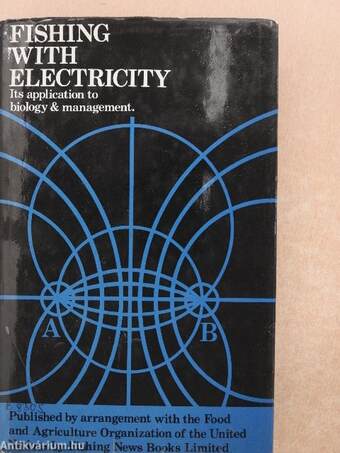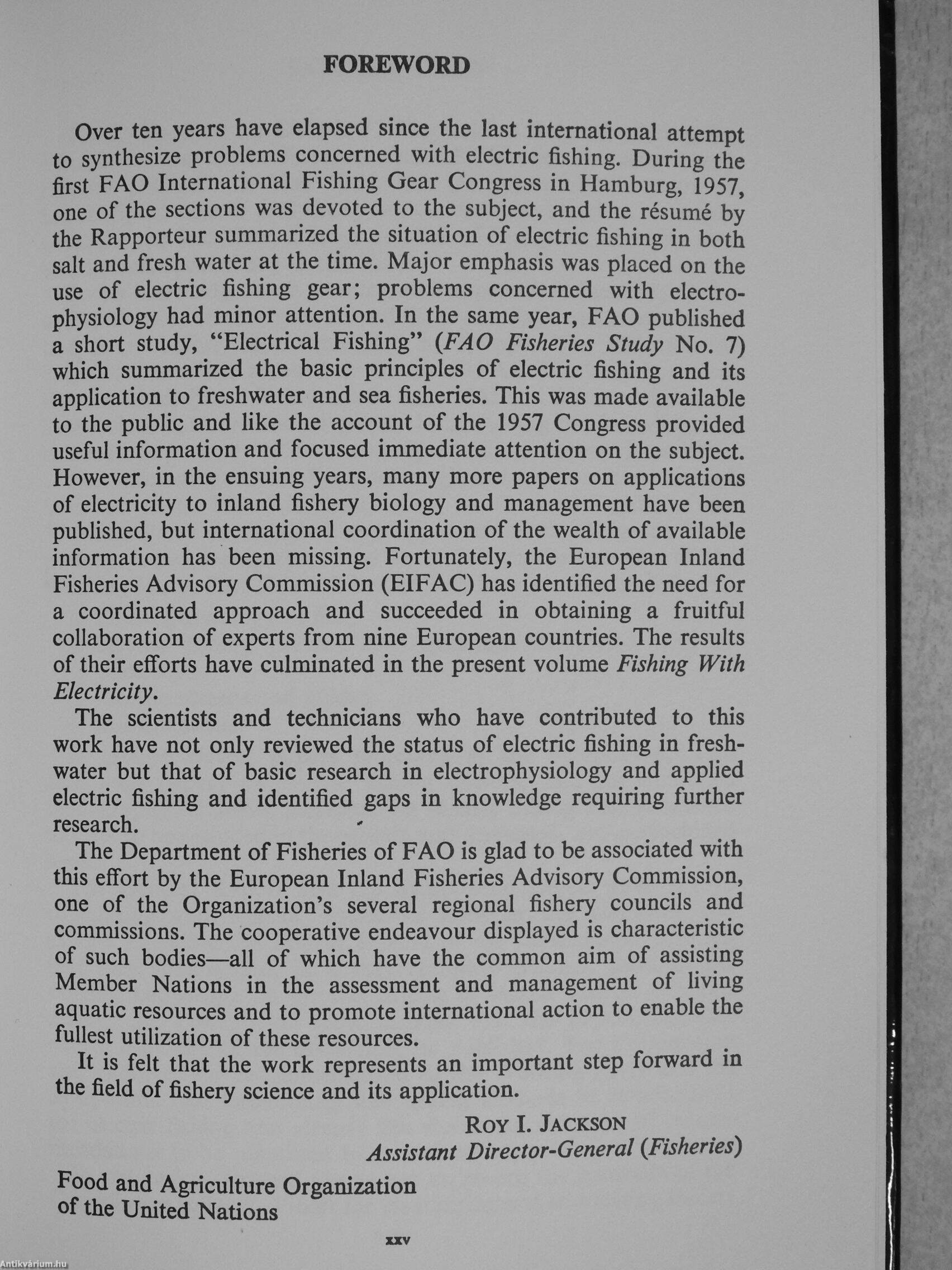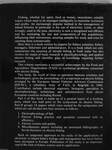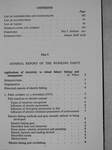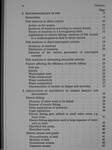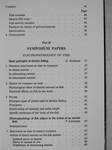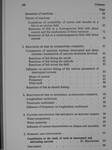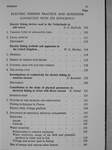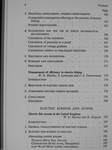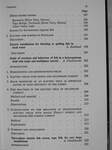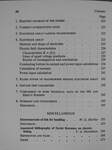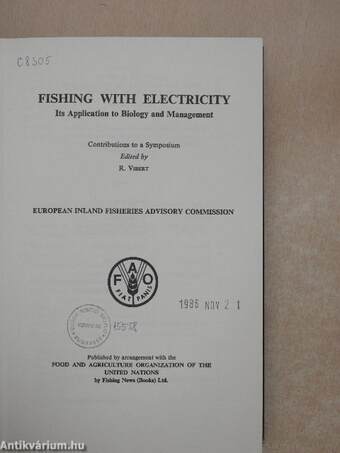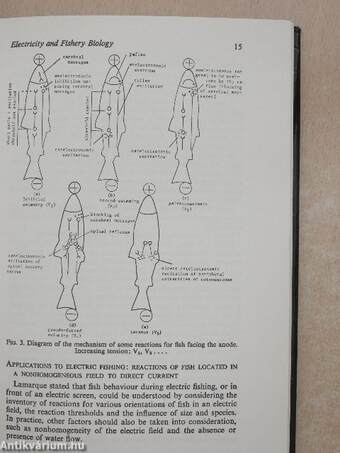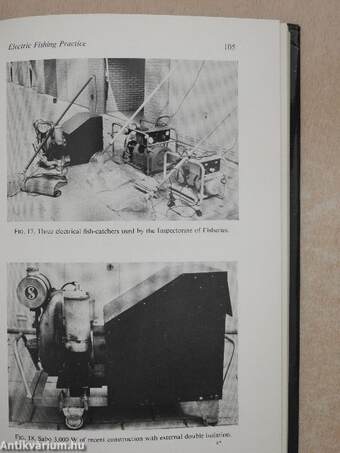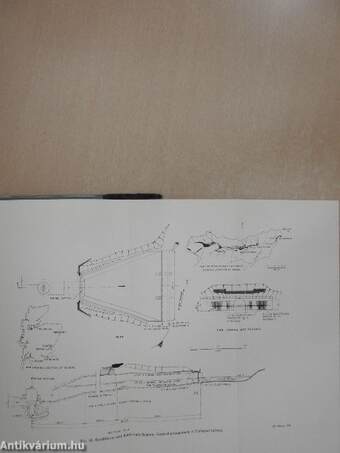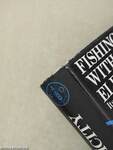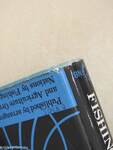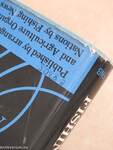1.063.119
kiadvánnyal nyújtjuk Magyarország legnagyobb antikvár könyv-kínálatát

VISSZA
A TETEJÉRE
JAVASLATOKÉszre-
vételek
Fishing with Electricity
Its Application to Biology and Management/Contributions to a Symposium
| Kiadó: | Food and Agriculture Organization of the United Nations-Fishing News (Books) Ltd. |
|---|---|
| Kiadás helye: | |
| Kiadás éve: | |
| Kötés típusa: | Fűzött kemény papírkötés |
| Oldalszám: | 276 oldal |
| Sorozatcím: | |
| Kötetszám: | |
| Nyelv: | Angol |
| Méret: | 22 cm x 14 cm |
| ISBN: | 0-85238-047-X |
| Megjegyzés: | Fekete-fehér fotókat, ábrákat és egy kihajtható mellékletet tartalmaz. |
naponta értesítjük a beérkező friss
kiadványokról
naponta értesítjük a beérkező friss
kiadványokról
Előszó
TovábbFülszöveg
Fishing, whether for sport, food or money, necessitates suitable waters which need to be managed intelligently to maximise recreation and profits. An increasingly popular method in the management of inland fisheries in particular is the use of electricity. Little, or often wrongly, used in the past, electricity is now a recognised and efficient tool for estimating the size and composition of fish populations, influencing their movements, securing samples for study and even for catching them commercially.
Here then is a book written by experts for fishery scientists, fishery managers, fishermen and administrators. It is a book which not only summarises the situation of electric fishing in fresh water but also reviews the status of basic research in electro-physiology and applied electric fishing and identifies gaps in knowledge requiring further research.
This volume represents a successful achievement by the Food and Agriculture Organization (FAO) to synthesise problems... Tovább
Fülszöveg
Fishing, whether for sport, food or money, necessitates suitable waters which need to be managed intelligently to maximise recreation and profits. An increasingly popular method in the management of inland fisheries in particular is the use of electricity. Little, or often wrongly, used in the past, electricity is now a recognised and efficient tool for estimating the size and composition of fish populations, influencing their movements, securing samples for study and even for catching them commercially.
Here then is a book written by experts for fishery scientists, fishery managers, fishermen and administrators. It is a book which not only summarises the situation of electric fishing in fresh water but also reviews the status of basic research in electro-physiology and applied electric fishing and identifies gaps in knowledge requiring further research.
This volume represents a successful achievement by the Food and Agriculture Organization (FAO) to synthesise problems concerned with electric fishing.
This book, the result of close co-operation between scientists and technologists, gives the proceedings of a symposium on electric fishing arranged by the European Inland Fisheries Advisory Commission (EIFAC), a subsidiary body of FAO, in Belgrade in 1966. Contributors include electrical engineers, biologists, specialists in electrophysiology, technicians and administrators from eleven European countries including Russia.
Part I of this book is made up of a general report of a working party which was held prior to the symposium on electric fishing. Part II groups 14 papers which were studied by the symposium and which are sub-divided into four sections as follows:
1. Electrophysiology of fish.
2. Electric fishing practice and questions connected with its efficiency.
3. Electric screens and guides.
4. Miscellaneous papers including an annotated bibliography of Soviet literature on electric fishing.
Such an integrated approach to the study of the applications of electricity to inland fishery biology and management has never before been attempted in Europe. Publication of this study is an important step in the field of fishery science and its application. Vissza
Témakörök
- Természettudomány > Állatvilág > Halak, akvarisztika
- Idegennyelv > Idegennyelvű könyvek > Angol > Műszaki
- Idegennyelv > Idegennyelvű könyvek > Angol > Egyéb
- Idegennyelv > Idegennyelvű könyvek > Angol > Természettudományok > Fizika
- Idegennyelv > Idegennyelvű könyvek > Angol > Természettudományok > Egyéb
- Műszaki > Elektronika > Elektronikai rendszerek
- Természettudomány > Fizika > Elektromosság és mágnesesség
- Természettudomány > Fizika > Idegennyelvű
- Természettudomány > Fizika > Társtudományok > Műszaki
- Mezőgazdaság > Állattenyésztés > Halászat
- Mezőgazdaság > Mezőgazdaság általában > Technológiák
- Műszaki > Idegennyelv > Angol



